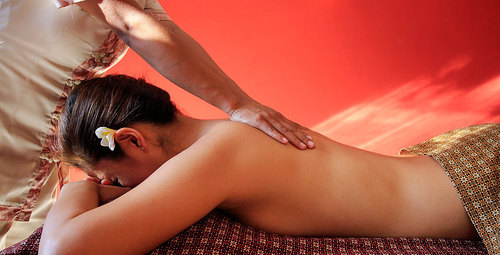Oil massage may seem like a cluttered and complex procedure best left to the spa, but when you have learned the fundamentals, self-massage with oil begins to become second-nature and well worth the effort. In this guide, we will explore the advantages of abhyanga, which oils to use, and how you can tailor your self-massage clinic to balance each dosha. If you do not yet understand your own unique Ayurvedic body type and current state of equilibrium, take our free dosha quiz to find out more about which sort of massage will benefit you. The action of massage itself melts away tension and pressure in the muscles. Ayurveda considers that these inherent medicinal massage benefits are further enhanced with the inclusion of an Ayurvedic massage oil. Health benefits from implementing a daily oil rub into your morning or evening routine include:

- Musculoskeletal and nervous system health
- Good circulation and lymph drainage
- Improved sleep patterns
- Softer, stronger skin
- Healthful vision
- Graceful aging
- Lustrous hair
- Firm, strong limbs
- Tone and vitality to the body’s cells
- Increased longevity
- Nourishment for the Entire body
In Sanskrit, the term Sneha could be translated as both oil and love. So, in abhyangam, there is an inherent link between enveloping the body in petroleum and enveloping it in love. Both experiences can give a profound feeling of stability, warmth, and relaxation. Sneha–love and oil –is Sushma, or subtle. This enables it to pass through minute channels in the human body and penetrate deep layers of tissue dhatus. Self-massage, as its name implies, is the act of massaging yourself. However, it is important to note that doing abhyanga on your own is a more involved procedure than simply slathering some oil in your back or neck for a couple of minutes. For something to deal with a particular muscle or joint particularly, you may consider applying Muscle Balm or Joint Balm a few times per day along with your abhyanga practice.